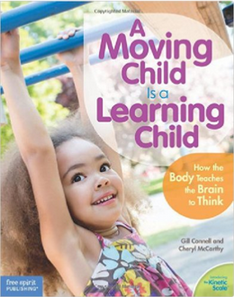In the summer of 2014, TimberNook published an article titled, "Why Children Fidget: And what we can do about it." The author, a pediatric occupational therapist, observed and tested students. They discovered that an overwhelming majority of students have an underdeveloped vestibular system when comparing them to children in the 1980's! Therefore, our students are having difficulty sitting still and paying attention in class due to an underdeveloped vestibular system! The result is students having difficulty focusing and fidgeting through lessons.
The fidgeting that teachers are seeing is actually an involuntary response by the student's brain. When students lose focus, the brain tries to get that focus back through moving the body (fidgeting). Essentially, the brain is trying to wake itself up through movement. Therefore, teachers who try to get students to stop fidgeting are most likely fighting a losing battle because the student is not voluntarily controlling the fidgeting. This will also result in frustration for both the student and teacher when the actions do not stop.
These findings beg the question, could some students suspected to have ADHD just not have a fully developed vestibular system?
So what can WE do about it?

You may be asking how we can do this when we are in the classroom the whole day. One of the easiest ways is by incorporating brain breaks into you classroom. You can do this on your own with counting exercises and songs, or you can use a wonderfully teacher and student friendly site called GoNoodle. GoNoodle is a free internet site that teachers (and parents) can join to get their children moving. It offers brain breaks ranging in different time lengths,and includes a wide variety of activities like yoga, Olympic events, and funny songs (with lots of moving and dancing).
We can also incorporate as much movement into our lessons as possible. Instead of clapping syllables in a word, students can hop the syllables. Instead of measuring lines on paper, take them outside and measure the length of the bars on the jungle gym. Instead of saying the counting patterns out loud, throw balls across the room in a pattern while continuing the counting pattern each time the ball is thrown. The possibilities are endless!!
While I have always been a strong proponent of movement in the classroom, I will also be handling my conversations with parents a little differently. Now, when parents raise concerns about their child's difficulty focusing and fidgeting, I am going to pose the question: "How much time each day does your child have for active play?"


















